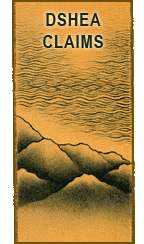DSHEA Tutorial: Disease Claim Non-Compliant Workarounds

This page articulates the various situations in which the FDA is going to consider labeling a disease claim. Keep in mind too that even with what you see on this page, the FDA guidance keeps mentioning “context” in regards to how they read a claim. There’s more on that later.
I call these non-compliant workarounds. The most obvious attempt to circumvent the disease claim rule is by giving a formula a name that implies a treatment for a disease such as “Tumor-Shrink”. Although the name of a formula isn’t a claim, the attempt to make a claim is obvious. What follows on this page are the various ways in which hard working folks like you and I try to work around the FDA’s rules. These are non-compliant, so don’t use these ideas, they won’t work. Get it?
The FDA has described ten criteria in to help determine if a statement is a disease claim. Here they are:
If the dietary supplement…
(1) Has an effect on a specific disease or class of diseases;
(2) has an effect, using scientific or lay terminology, on one or more signs or symptoms that are recognizable to health care professionals or consumers as being characteristic of a specific disease or of a number of different specific diseases;
(3) has an effect on a consequence of a natural state that presents a characteristic set of signs or symptoms recognizable to health care professionals or consumers as constituting an abnormality of the body;
(4) has an effect on disease through one or more of the following factors:
(a) The name of the product;
(b) a statement about the formulation of the product, including a claim that the product contains an ingredient that has been regulated by FDA as a drug and is well known to consumers for its use in preventing or treating a disease;
(c) citation of a publication or reference, if the citation refers to a disease use;
(d) use of the term “disease” or “diseased;” or
(e) use of pictures, vignettes, symbols, or other means;
(5) belongs to a class of products that is intended to diagnose, mitigate, treat, cure, or prevent a disease;
(6) is a substitute for a product that is a therapy for a disease;
(7) augments a particular therapy or drug action;
(8) has a role in the body’s response to a disease or to a vector of disease;
(9) treats, prevents, or mitigates adverse events associated with a therapy for a disease and manifested by a characteristic set of signs or symptoms; or
(10) otherwise suggests an effect on a disease or diseases.
That last one pretty much just leaves the door open for any new unforeseen claims such as interpretive dance, mime, pop song, whatever.
Next: using slang or TCM terms to make disease claims.
 Last modified: August 16, 2009
Last modified: August 16, 2009  Tags: Claims, DSHEA В· Posted in: Claims
Tags: Claims, DSHEA В· Posted in: Claims
